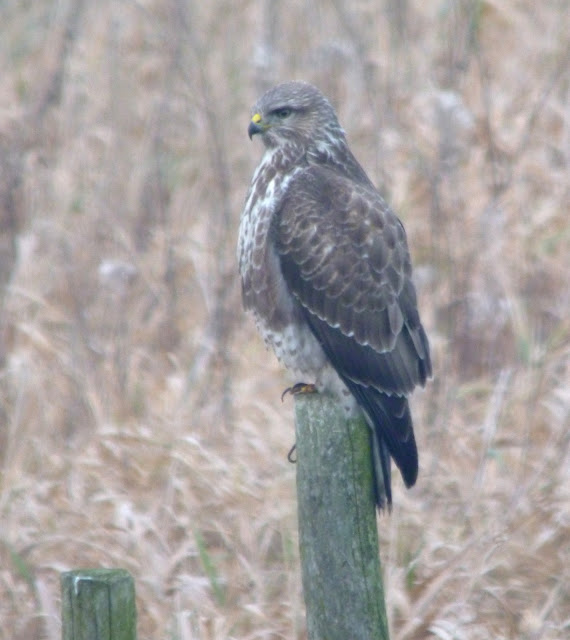I was working down at Slimbridge on Thursday and early Friday morning and managed an hours birding on Thursday afternoon. The meeting I was at was in the McNiece room, above the swan observatory and it was really inspiring to see four Common Cranes fly past the window! Always good to see Bewick's Swans and I counted c.110 scattered around, with many dropping onto the rushy pen late afternoon to join flocks of Pintail, Tufted Duck and Pochards dining on there. The tack piece is a superb piece of wet grassland just beyond the rushy pen and it was full of birds; Wigeon, Teal, Lapwing, Dunlin, Ruff, Redshank, Golden Plover and Black-tailed Godwits - a bit like a mini Marshside. A Peregrine blasted through spooking everything, including two Buzzards. I picked up the 'resident' Long-billed Dowitcher in a flock of passing Black-tailed Godwits heading to an outer part of the reserve. The reserve and its diverse habitats at Slimbridge is well managed by Dave Paynter and Martin McGill, their assistant James Lees and an excellent team of hard working volunteers; the work they do can really appreciated when the birds put on a show.
Friday morning in the freezing dawn was a treat as the four Common Cranes, 18 Eurasian White-fronted Geese and numerous Bewick's Swans flew right overhead - an antidote to the three hour M5-M6 drive later that morning.
Steve Sweetnam and I birded Martin Mere this morning and enjoyed the Whooper Swan spectacle (great to see visitors enjoying the new fed time at 10.30) and the throngs of other waterfowl species. I counted a couple of species with 98 Ruff and 485 Lapwings being of interest. I missed the male Hen Harrier that was around, but did see the adult female Marsh Harrier, four Buzzards, two Kestrels and a Woodcock (skulking in front of Janet Kear hide). We checked the titmouse flocks and managed four Coal Tits, two Treecreepers and two Goldcrests. A single adult Eurasian White-fronted Goose grazing with a small group of Pink-feet at the back of the mere was nice to see but the highlight of the morning was the clouds of Woodpigeons between Geldhey and Bescar; I estimated 37,000!
A drive down Curlew Lane and Mere Lane produced 14 Corn Buntings and at least eight Yellowhammers. A brief visit to Mere Sands Wood was worthwhile with a Water Rail from the Lancaster hide and 1190 Teal and 56 Shoveler from Marshsall hide. Cold, hunger and family responsibilities caused a 3p.m. finish but I'll be out at dawn - it's the last coordinated Pink-foot count of the year. Bring it on.


















